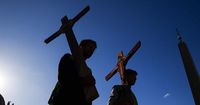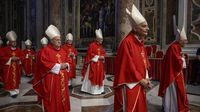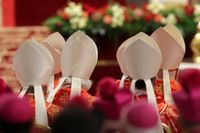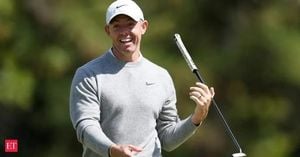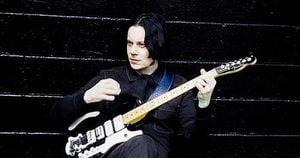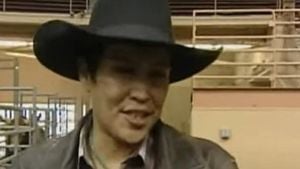VATICAN CITY — The long-anticipated papal conclave has officially begun today, May 7, 2025, as 133 cardinals from around the world gather at the Vatican to elect a new leader for the Catholic Church following the death of Pope Francis last month. The day commenced with a solemn Mass at St. Peter's Basilica, known as the "Pro Eligendo Romano Pontifice," or "for the election of the Roman Pontiff." This mass was led by Cardinal Giovanni Battista Re, the Dean of the College of Cardinals, who emphasized the importance of the moment, calling for spiritual support and strength as the cardinals face a "complex turning point in history."
The cardinals, dressed in traditional red robes, processed into the basilica, where they prayed and sang hymns, invoking divine guidance for their upcoming decision. Following the Mass, the cardinals will proceed to the Sistine Chapel, a place steeped in history and artistry, where they will cast their votes in secrecy. The chapel has been sealed off from the outside world, ensuring that the deliberations remain confidential.
Once inside the chapel, the cardinal electors will take an oath of secrecy, vowing to maintain confidentiality regarding their discussions and decisions. They will stand before Michelangelo's magnificent frescoes, including the iconic "The Last Judgment," as they prepare to engage in what is often a contentious and deeply political process.
The voting will commence this afternoon, with the cardinals casting their ballots to select the next pope. A two-thirds majority is required for a candidate to be elected. If no candidate receives the necessary votes today, the conclave will continue into tomorrow, with up to four rounds of voting possible each day. Black smoke (fumata nera) will signal that no pope has been elected, while white smoke (fumata bianca) will indicate that a new pontiff has been chosen. The Vatican has indicated that if no pope is elected today, black smoke could be expected around 7 PM local time.
As the cardinals prepare to vote, speculation is rife regarding potential successors to Pope Francis. Among the frontrunners are Italian Cardinal Pietro Parolin, the Vatican's Secretary of State, and Filipino Cardinal Luis Antonio Tagle, known for his progressive views and strong ties to the global Catholic community. Both candidates represent different paths for the Church: Parolin is seen as a stabilizing figure who could maintain continuity with Francis's legacy, while Tagle is viewed as a potential reformer who could push for further changes.
The conclave is notable not only for its historical significance but also for its unprecedented diversity. This year's gathering includes a record number of cardinal electors from various backgrounds, reflecting the global nature of the Catholic Church, which boasts approximately 1.4 billion members worldwide. The cardinals hail from 70 different countries, and over 100 of them are participating in a conclave for the first time, marking a new era for the Church.
As the day unfolds, the atmosphere in Vatican City is charged with anticipation. Crowds have gathered in St. Peter's Square, eager to witness the smoke signals that will indicate the outcome of the voting. Many are hopeful for a prompt decision, while others brace for a potentially drawn-out process, reminiscent of past conclaves that have lasted several days.
In the lead-up to the conclave, discussions among the cardinals have centered on critical issues facing the Church, including its response to sexual abuse scandals, financial transparency, and the need to engage with contemporary societal challenges. Cardinal Michael Czerny, who has been vocal about the Church's responsibility to advocate for marginalized communities, emphasized the importance of choosing a pope who can address these pressing concerns.
The conclave's proceedings are shrouded in secrecy, with the cardinals prohibited from any outside communication. This isolation is intended to foster an environment conducive to prayer and reflection, allowing the electors to focus solely on their sacred duty. Each cardinal will cast his vote on a ballot inscribed with the words "Eligo in summen pontificem" — "I elect as Supreme Pontiff." The ballots will be counted, and the results will be announced through the traditional smoke signals.
As the sun sets over Vatican City, the world watches closely. The outcome of this conclave will not only shape the future of the Catholic Church but will also resonate throughout the global community. With the potential for a new pope to emerge from this historic gathering, the anticipation is palpable, and the stakes are high.
As the cardinals enter the Sistine Chapel for their first vote, the atmosphere is a blend of solemnity and hope. Each cardinal carries the weight of the Church's future on their shoulders, and the decision they make will echo through history. The world awaits the smoke signals that will announce the next chapter for the Catholic Church, eager to learn who will lead the faithful into a new era.
In the coming hours, as the cardinals deliberate and vote, the faithful across the globe will hold their breath, awaiting the moment when the chimneys atop the Sistine Chapel will signal the election of a new pope. Will it be a figure who continues the path set by Pope Francis, or someone who represents a shift towards more traditional values? Only time will tell, but one thing is certain: this conclave marks a pivotal moment for the Church and its followers.
